In pics: Linxia brick carving in northwest China's Gansu
Xinhua
1559381721000
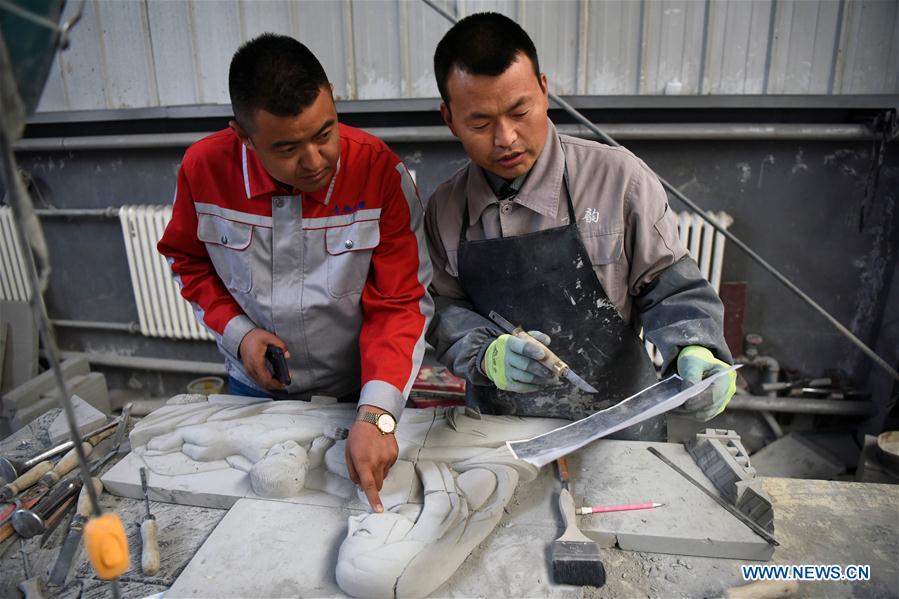
Workers discuss carving plans at a brick carving company in Linxia County of Linxia Hui Autonomous Prefecture, northwest China's Gansu Province, May 31, 2019. Linxia brick carving is one of the traditional folk arts in Linxia, which became a mature artistic form and prospered during the Ming (1368-1644) and Qing (1644-1911) dynasties. It was listed in 2006 as one of China's national intangible heritages. (Xinhua/Ma Ning)
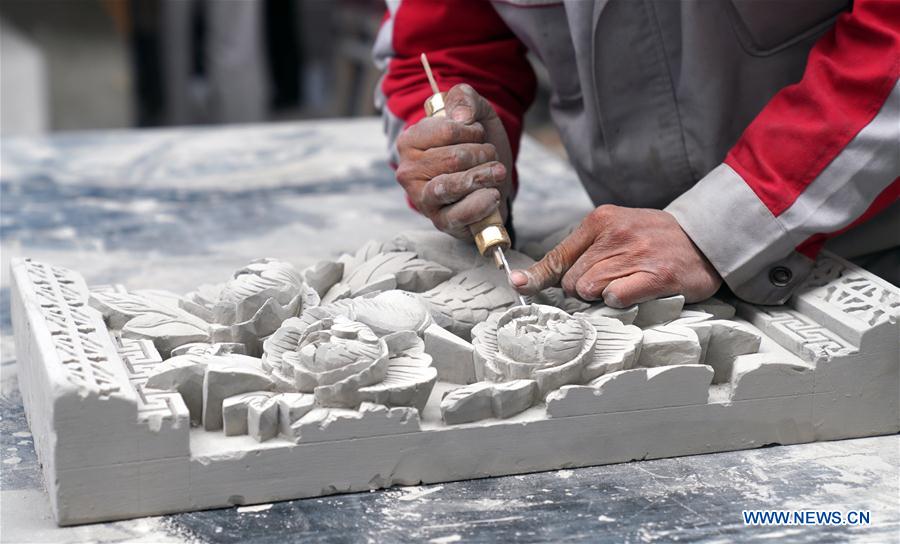
A worker makes brick carving artworks at a brick carving company in Linxia County of Linxia Hui Autonomous Prefecture, northwest China's Gansu Province, May 31, 2019. Linxia brick carving is one of the traditional folk arts in Linxia, which became a mature artistic form and prospered during the Ming (1368-1644) and Qing (1644-1911) dynasties. It was listed in 2006 as one of China's national intangible heritages. (Xinhua/Li Mengxin)

A worker arranges bricks for carving at a brick carving company in Linxia Hui Autonomous Prefecture, northwest China's Gansu Province, May 31, 2019. Linxia brick carving is one of the traditional folk arts in Linxia, which became a mature artistic form and prospered during the Ming (1368-1644) and Qing (1644-1911) dynasties. It was listed in 2006 as one of China's national intangible heritages. (Xinhua/Ma Ning)

A worker makes brick carving artworks at a brick carving company in Linxia County of Linxia Hui Autonomous Prefecture, northwest China's Gansu Province, May 31, 2019. Linxia brick carving is one of the traditional folk arts in Linxia, which became a mature artistic form and prospered during the Ming (1368-1644) and Qing (1644-1911) dynasties. It was listed in 2006 as one of China's national intangible heritages. (Xinhua/Chen Junqing)

A worker measures a brick for carving at a brick carving company in Linxia County of Linxia Hui Autonomous Prefecture, northwest China's Gansu Province, May 31, 2019. Linxia brick carving is one of the traditional folk arts in Linxia, which became a mature artistic form and prospered during the Ming (1368-1644) and Qing (1644-1911) dynasties. It was listed in 2006 as one of China's national intangible heritages. (Xinhua/Ma Ning)

A worker makes brick carving artworks at a brick carving company in Linxia County of Linxia Hui Autonomous Prefecture, northwest China's Gansu Province, May 31, 2019. Linxia brick carving is one of the traditional folk arts in Linxia, which became a mature artistic form and prospered during the Ming (1368-1644) and Qing (1644-1911) dynasties. It was listed in 2006 as one of China's national intangible heritages. (Xinhua/Li Mengxin)
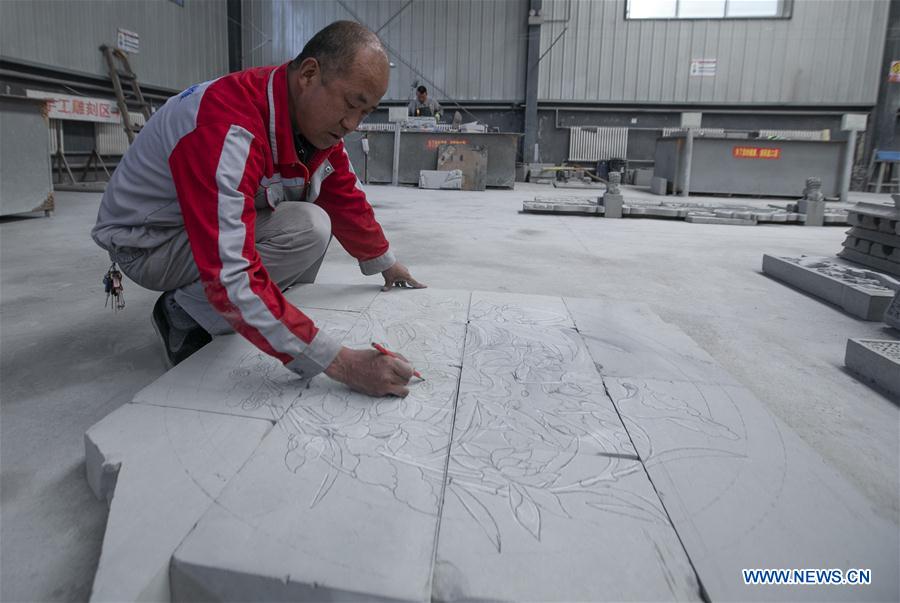
A worker makes brick carving artworks at a brick carving company in Linxia County of Linxia Hui Autonomous Prefecture, northwest China's Gansu Province, May 31, 2019. Linxia brick carving is one of the traditional folk arts in Linxia, which became a mature artistic form and prospered during the Ming (1368-1644) and Qing (1644-1911) dynasties. It was listed in 2006 as one of China's national intangible heritages. (Xinhua/Zhang Fan)
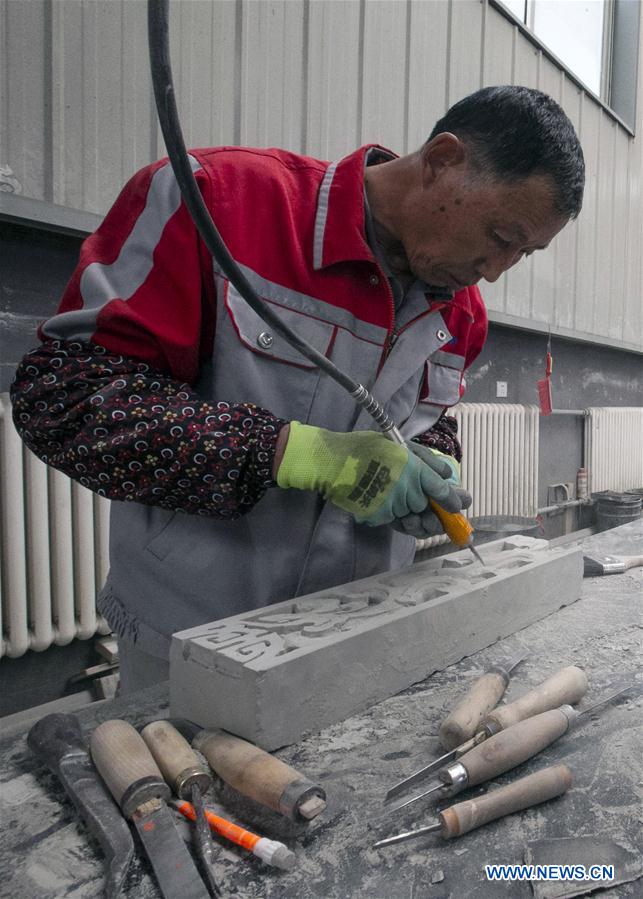
A worker makes brick carving artworks at a brick carving company in Linxia County of Linxia Hui Autonomous Prefecture, northwest China's Gansu Province, May 31, 2019. Linxia brick carving is one of the traditional folk arts in Linxia, which became a mature artistic form and prospered during the Ming (1368-1644) and Qing (1644-1911) dynasties. It was listed in 2006 as one of China's national intangible heritages. (Xinhua/Zhang Fan)
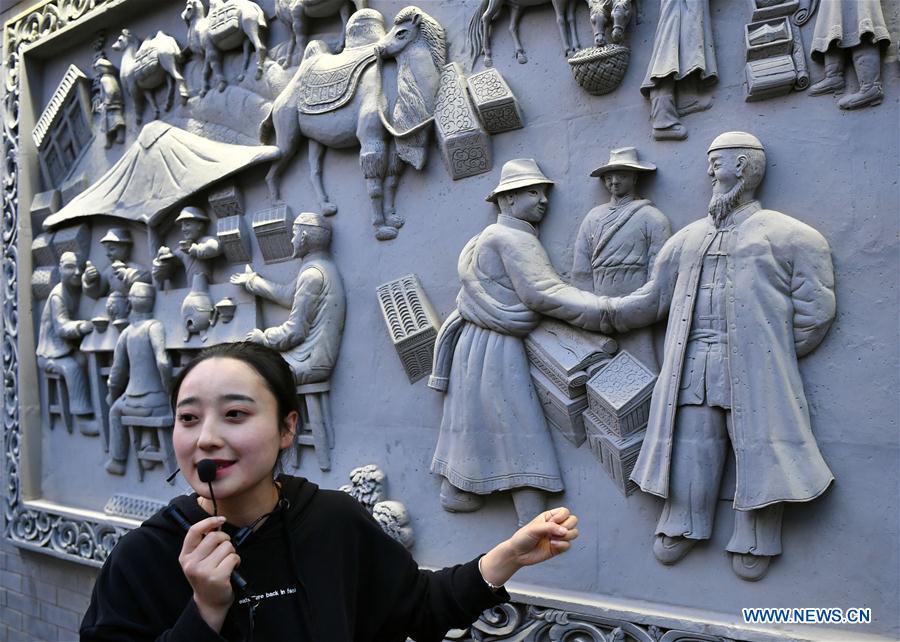
A tour guide introduces a giant brick carving artwork in Linxia City of Linxia Hui Autonomous Prefecture, northwest China's Gansu Province, May 31, 2019. Linxia brick carving is one of the traditional folk arts in Linxia, which became a mature artistic form and prospered during the Ming (1368-1644) and Qing (1644-1911) dynasties. It was listed in 2006 as one of China's national intangible heritages. (Xinhua/Wang Qingqin)
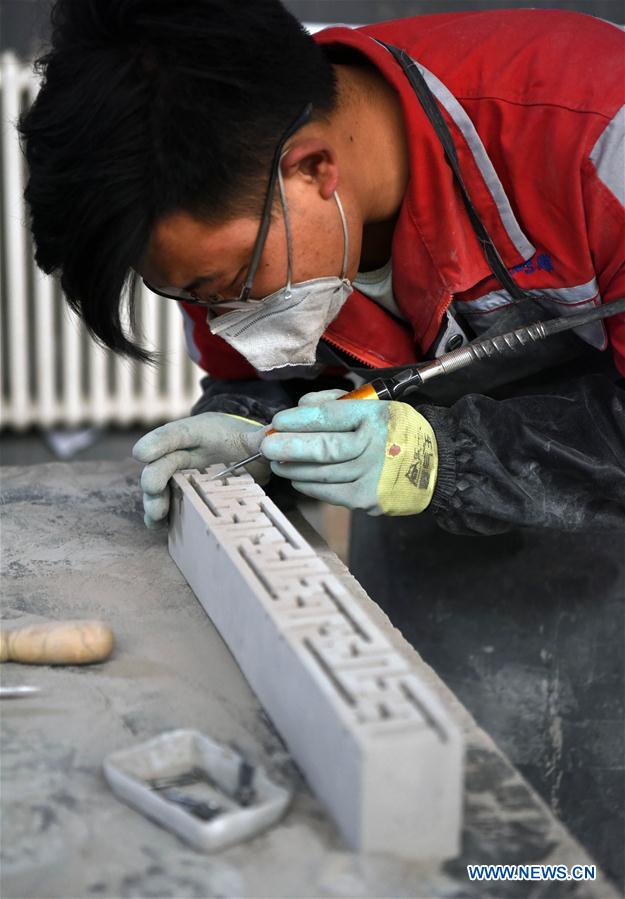
A worker makes brick carving artworks at a brick carving company in Linxia County of Linxia Hui Autonomous Prefecture, northwest China's Gansu Province, May 31, 2019. Linxia brick carving is one of the traditional folk arts in Linxia, which became a mature artistic form and prospered during the Ming (1368-1644) and Qing (1644-1911) dynasties. It was listed in 2006 as one of China's national intangible heritages. (Xinhua/Ma Ning)

A worker makes brick carving artworks at a brick carving company in Linxia County of Linxia Hui Autonomous Prefecture, northwest China's Gansu Province, May 31, 2019. Linxia brick carving is one of the traditional folk arts in Linxia, which became a mature artistic form and prospered during the Ming (1368-1644) and Qing (1644-1911) dynasties. It was listed in 2006 as one of China's national intangible heritages. (Xinhua/Zhang Lei)
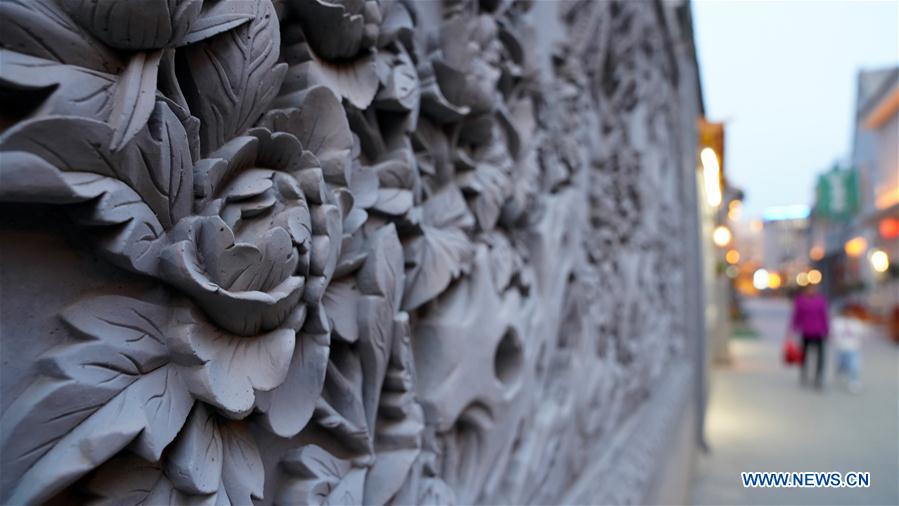
Photo taken on May 31, 2019 shows a wall with brick carving artworks in Linxia City of Linxia Hui Autonomous Prefecture, northwest China's Gansu Province. Linxia brick carving is one of the traditional folk arts in Linxia, which became a mature artistic form and prospered during the Ming (1368-1644) and Qing (1644-1911) dynasties. It was listed in 2006 as one of China's national intangible heritages. (Xinhua/Li Mengxin)
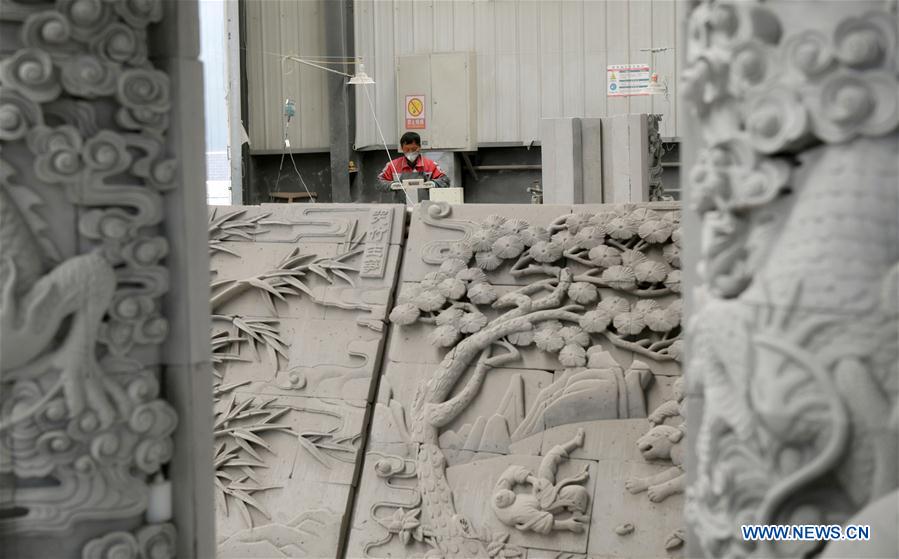
A worker makes brick carving artworks at a brick carving company in Linxia County of Linxia Hui Autonomous Prefecture, northwest China's Gansu Province, May 31, 2019. Linxia brick carving is one of the traditional folk arts in Linxia, which became a mature artistic form and prospered during the Ming (1368-1644) and Qing (1644-1911) dynasties. It was listed in 2006 as one of China's national intangible heritages. (Xinhua/Wang Qingqin)
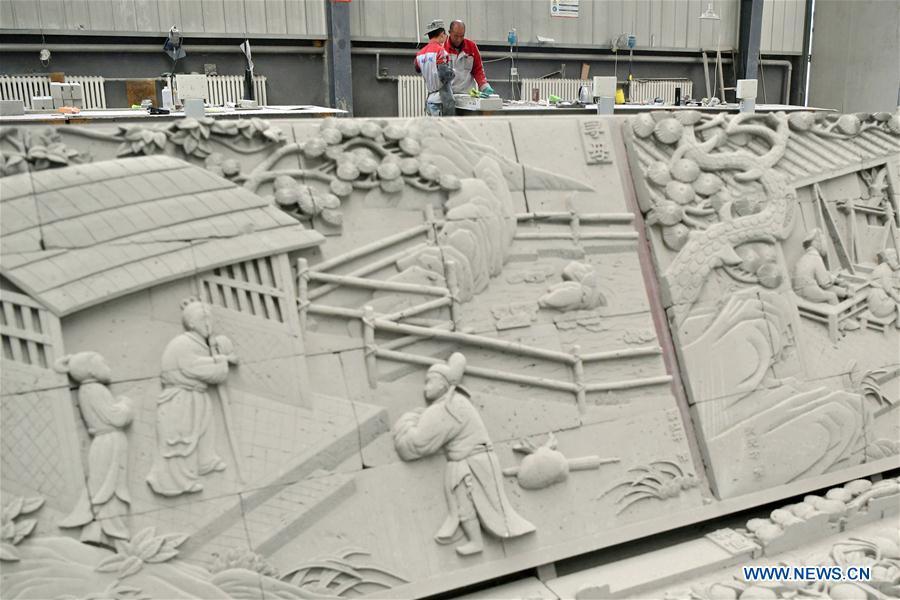
Workers make brick carving artworks at a brick carving company in Linxia County of Linxia Hui Autonomous Prefecture, northwest China's Gansu Province, May 31, 2019. Linxia brick carving is one of the traditional folk arts in Linxia, which became a mature artistic form and prospered during the Ming (1368-1644) and Qing (1644-1911) dynasties. It was listed in 2006 as one of China's national intangible heritages. (Xinhua/Wang Qingqin)
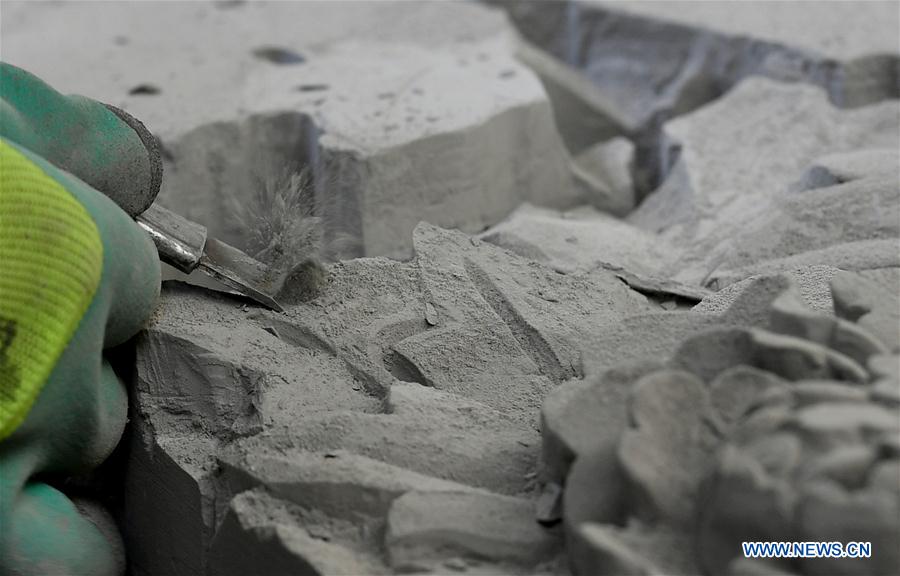
A worker makes brick carving artworks at a brick carving company in Linxia County of Linxia Hui Autonomous Prefecture, northwest China's Gansu Province, May 31, 2019. Linxia brick carving is one of the traditional folk arts in Linxia, which became a mature artistic form and prospered during the Ming (1368-1644) and Qing (1644-1911) dynasties. It was listed in 2006 as one of China's national intangible heritages. (Xinhua/Wang Qingqin)
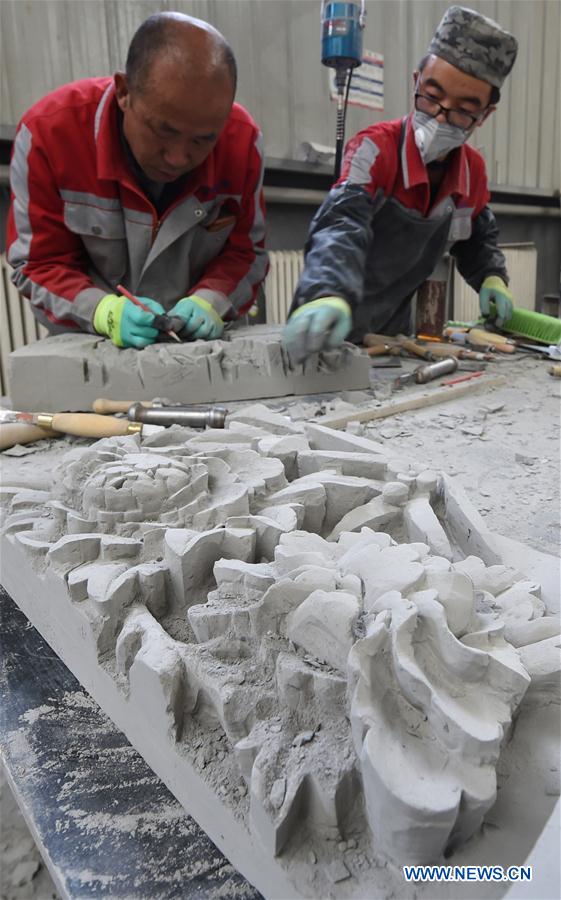
Workers make brick carving artworks at a brick carving company in Linxia County of Linxia Hui Autonomous Prefecture, northwest China's Gansu Province, May 31, 2019. Linxia brick carving is one of the traditional folk arts in Linxia, which became a mature artistic form and prospered during the Ming (1368-1644) and Qing (1644-1911) dynasties. It was listed in 2006 as one of China's national intangible heritages. (Xinhua/Zhang Lei)
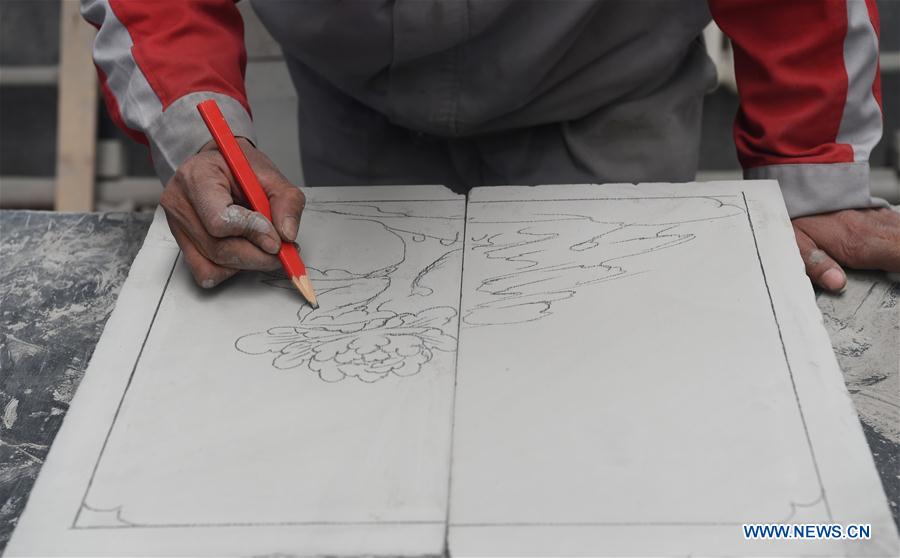
A worker makes brick carving artworks at a brick carving company in Linxia County of Linxia Hui Autonomous Prefecture, northwest China's Gansu Province, May 31, 2019. Linxia brick carving is one of the traditional folk arts in Linxia, which became a mature artistic form and prospered during the Ming (1368-1644) and Qing (1644-1911) dynasties. It was listed in 2006 as one of China's national intangible heritages. (Xinhua/Zhang Lei)

A man takes pictures of a giant brick carving artwork at a brick carving company in Linxia County of Linxia Hui Autonomous Prefecture, northwest China's Gansu Province, May 31, 2019. Linxia brick carving is one of the traditional folk arts in Linxia, which became a mature artistic form and prospered during the Ming (1368-1644) and Qing (1644-1911) dynasties. It was listed in 2006 as one of China's national intangible heritages. (Xinhua/Chen Junqing)
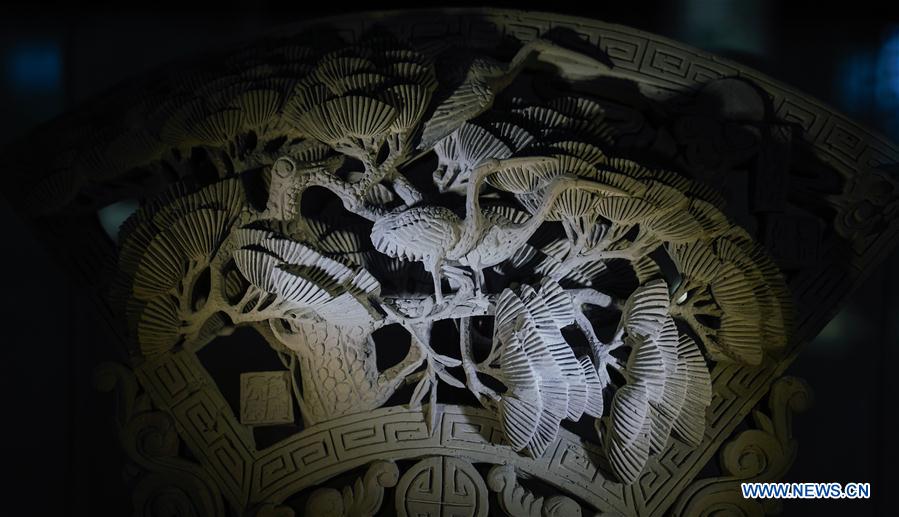
Photo taken on May 31, 2019 shows a piece of brick carving artwork at a brick carving company in Linxia County of Linxia Hui Autonomous Prefecture, northwest China's Gansu Province. Linxia brick carving is one of the traditional folk arts in Linxia, which became a mature artistic form and prospered during the Ming (1368-1644) and Qing (1644-1911) dynasties. It was listed in 2006 as one of China's national intangible heritages. (Xinhua/Chen Junqing)
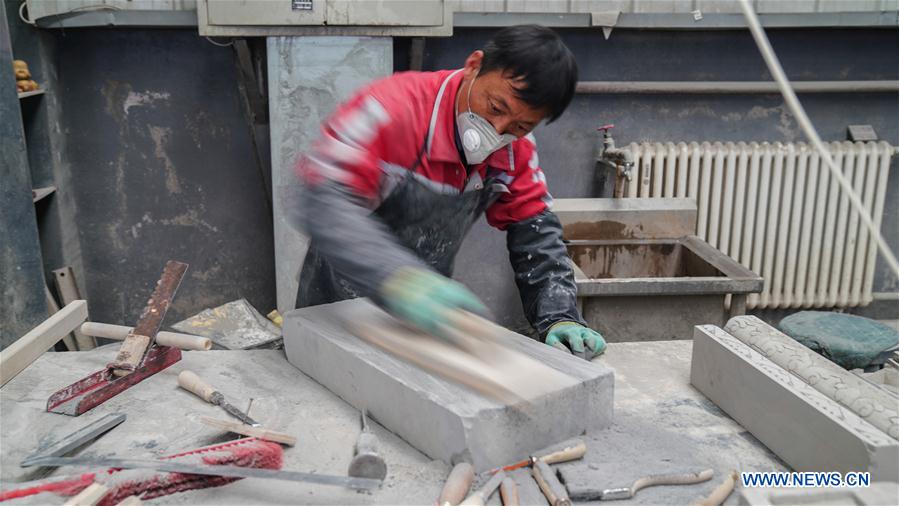
A worker sands a brick for carving at a brick carving company in Linxia County of Linxia Hui Autonomous Prefecture, northwest China's Gansu Province, May 31, 2019. Linxia brick carving is one of the traditional folk arts in Linxia, which became a mature artistic form and prospered during the Ming (1368-1644) and Qing (1644-1911) dynasties. It was listed in 2006 as one of China's national intangible cultural heritages. (Xinhua/Chen Junqing)


